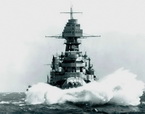Zaslon
Posts: 283
Joined: 6/14/2015
Status: offline

|
quote:
ORIGINAL: ckfinite
quote:
I am talking about the lockheed's classification which many people use today (they forgot the super-agility which was dropped by Lockheed when the F-35 enter in the field).
Super maneuverability is not a game-changing feature the way LO is. It's been present since the 3rd generation in various forms, and has been especially prevalent in Russian 4th generation designs. Why? Because the Russians don't have the ability to keep up with the West in terms of electronics or stealth coatings, as demonstrated with their eternal AESA trouble and PAK-FA maladies, and need to sell it for all they've got. It's only really useful in the low-speed endgame, when you have a single chance and then you're dead. Agility is not a deciding factor in determining which generation an aircraft fits into.
The idea behind the 5th generation moniker is that it denotes aircraft that incorporate the more modern network based sensor model, as well as stealth. This looks to be a very good distinction going forwards, too. Look at the difference between the Eurofighter, the Gripen, and the Rafale, and what's coming next. We have the ATD-X, the PAK-FA, the J-20 and J-31, K-X, and a lot besides. These aircraft are fundamentally different than the eurocanards because they have stealth functionality and systems designed around that stealth capability. VLO capability is a good distinction, because it draws a clear and easy to distinguish line between these generations. Lockheed may have made the term up, but these future aircraft projects are demonstrating that their criterion has a lot of merit as a distinguishing feature.
Yeah, we consider that a MiG-29 and a F-15 are both 4th gen designs. Both designs are very very different. They followed different phisolophies, use different technologies. If we apply the same rigid criteria that we use in the 5th gen, the Soviet fighters should a 3.5, 3++... But nopes. MiG-29 and Su-27 are both 4th gen fighters.
There are a fixation about VLO. If the fighter have VLO you are 5th gen, if not it's a 4th gen, 4,5 or 4++. It's a very rigid criteria that was never used in previous generations.
So why? It's very curious, specially when maneuverability, top speed, range, BVR capacity... are intrinsic parameters of each fighter (only depends of the fighter). But VLO isn't an intrinsic parameter of each fighter. Maybe, ATM VLO is an illusion if the new S-400 can work in a bistatic mode for example. We know that PAK FA and Su-35S have two radars, one working in X-band an a wing radar working at L Band...So We cannot treat VLO in the same way that we treat other parameters. Now F-22 can have VLO, but tomorrow nobody knows.
We don't know if the new Chinese designs are VLO, we think that but only based in the angular shape of the fuselage. And also we think that the lack of an angular shaped fuselage in the Eurocanards means that they aren't stealth. Stealth isn't an absolute parameter (Either you have or you haven't).
< Message edited by Zaslon -- 8/28/2015 8:57:19 PM >
_____________________________
 Kids think about Iran and Amateurs think about Russia, but professionals think about China
|
 Printable Version
Printable Version










 New Messages
New Messages No New Messages
No New Messages Hot Topic w/ New Messages
Hot Topic w/ New Messages Hot Topic w/o New Messages
Hot Topic w/o New Messages Locked w/ New Messages
Locked w/ New Messages Locked w/o New Messages
Locked w/o New Messages Post New Thread
Post New Thread